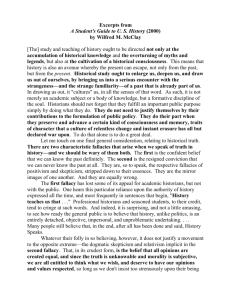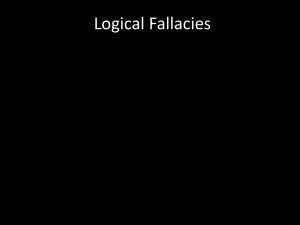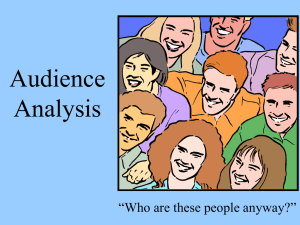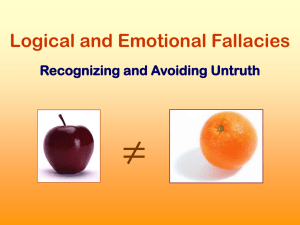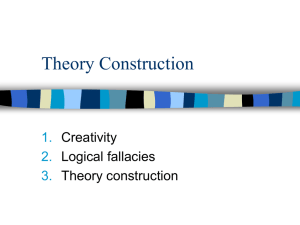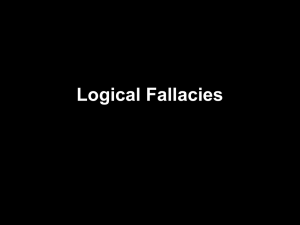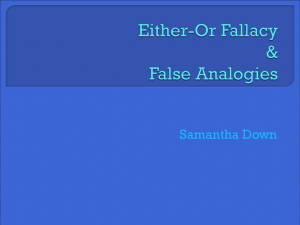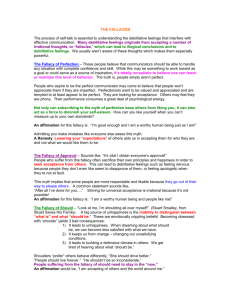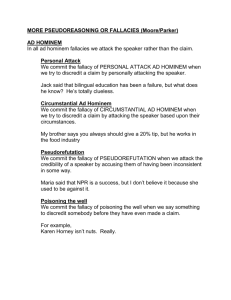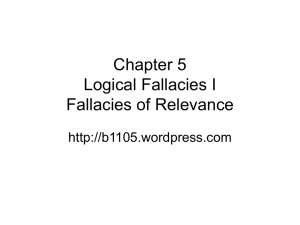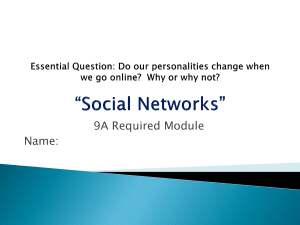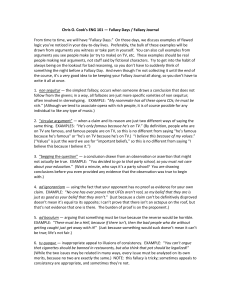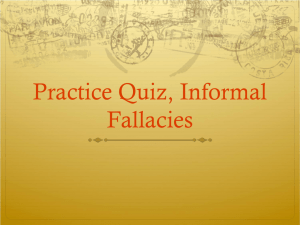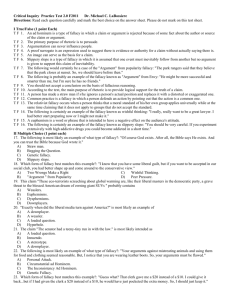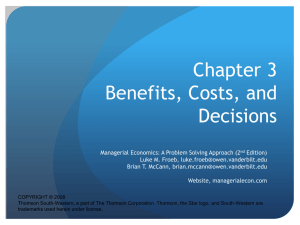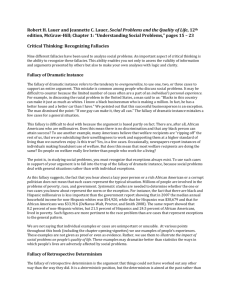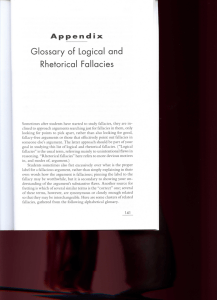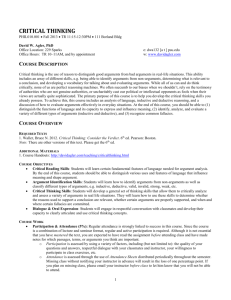Rhetorical Fallacies
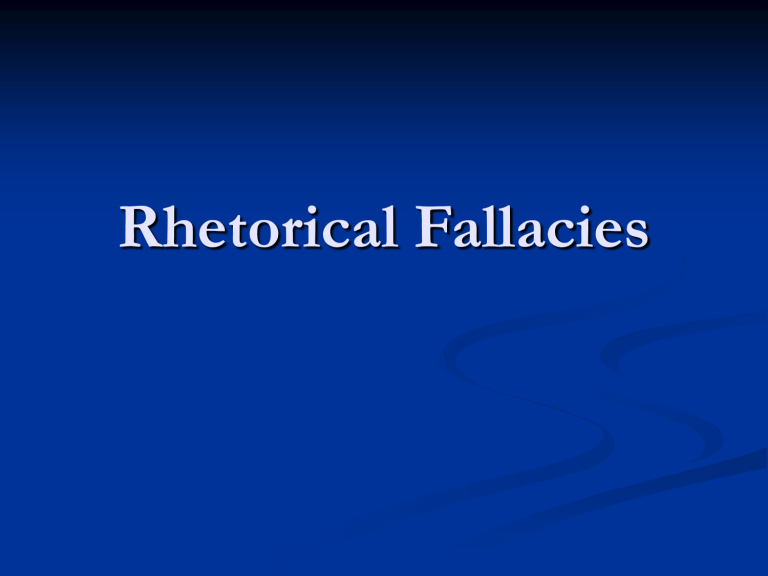
Rhetorical Fallacies
What is Rhetorical Fallacy?
Rhetorical fallacy
Is a failure of discussion or argument
Distracts the audience with various appeals instead of using sound reasoning
Doesn’t allow for the open, two-way exchange of ideas upon which meaningful conversations depend.
Are rhetorical fallacies good or bad? Do they have a use in persuasive arguments?
Three Types of Fallacy
They can be divided into three categories:
Emotional fallacies
unfairly appeals to the audience’s emotions
Ethical fallacies
unreasonably advances the writer’s authority or character
Logical fallacies
Inaccurately cites reasoning, or cites reasoning that is false
Emotional Fallacy
Sentimental Appeals use emotion to distract the audience from the facts. (Appeal to what?)
Example: The thousands of animals killed in the BP oil spill have shown us that oil is bad for the environment.
Scare Tactics try to frighten people into agreeing with the arguer by threatening them or predicting unrealistically dire consequences. (Appeal to what?)
Example: If you don’t support the party’s tax plan, you and your family will be reduced to poverty.
Emotional Fallacy
False Need arguments create an unnecessary desire for things. (Appeal to what?)
Example: You need an expensive car or people won’t think you’re cool.
Bandwagon Appeals encourage an audience to agree with the writer because everyone else is doing so.
Example: Everyone else is jumping off this bridge, so it MUST be a good thing to do.
Emotional Fallacy
Either/Or Choices reduce complicated issues to only two possible courses of action.
Example: The government can either approve my generator design immediately or say goodbye forever to affordable energy.
Slippery Slope arguments suggest that one thing will lead to another, oftentimes with disastrous results.
Example: If you get a B in high school, you won’t get into the college of your choice, and therefore will never have a meaningful career.
Ethical Fallacy
False Authority asks audiences to agree with a writer based simply on his or her character or authority even if that person may not be fully qualified to offer that assertion.
Example: My middle school teacher said it, so it must be true.
Using Authority Instead of Evidence occurs when someone offers personal authority as proof.
Example: Because I said so.
Dogmatism shuts down discussion by asserting that the writer’s beliefs are the only acceptable ones.
Example: I’m the teacher, so what I say is the only right answer.
Ethical Fallacy
Guilt by Association calls someone’s character into question by examining the character of that person’s associates.
Example: You can’t hang out with him; his friends are trouble.
Ad Hominem arguments attack a person’s character rather than that person’s reasoning.
Example: Why should we think a candidate who recently divorced will keep her campaign promises?
Logical Fallacy
A Hasty Generalization draws conclusions from limited evidence.
Example: I wouldn’t eat at that restaurant—the only time I ate there, I got food poisoning.
Faulty Causality arguments confuse time order with causation: one event can occur after another without being caused by it.
Example: A year after the release of the violent shoot-’em-up video game Annihilator, incidents of school violence tripled—surely not a coincidence.
Logical Fallacy
Begging the Question occurs when a writer simply restates the claim in a different way; such an argument is circular.
Example: His lies are evident from the untruthful nature of his statements.
Stacked Evidence represents only one side of the issue, thus distorting the issue.
Example: Cats are superior to dogs because they are cleaner, cuter, and more independent.
Logical Fallacy
A Faulty Analogy is an inaccurate, inappropriate, or misleading comparison between two things.
Example: People who have to have a cup of coffee every morning before they can function have no less a problem than alcoholics who have to have their alcohol each day to sustain them.
Now You Try!
On a sheet of paper, write out five examples of rhetorical fallacy.
Any type will do. Just don’t use the same type twice.
Then we’ll take them up and I’ll randomly read them.
We’ll guess what kind of fallacy it is
